
CHAPTER TWO: THE MAGNIFICENT MILAN CATHEDRAL & ROOFTOP
November 8, 2018
CHAPTER FOUR: NO REST FOR THE WEARY
November 17, 2018We Still Didn’t Drink All The Vino: Mai Tai Tom’s 2018 Return To Italy
CHAPTER THREE – GIVE ME SOME OF THAT (REALLY) OLD TIME RELIGION
DAY THREE – Classic Croissants, Oops Wrong Church, Altar Altering, Four Friends And A Funeral, A Tisket A Casket, Fresco Frenzy, Why No Two Corgis?, Kim’s Lunch-O-Meter, Where’s David Letterman, Supper Time Or No Supper Time, Early Happy Hour, You Can Take Photos?, Stampede, Italian Melon Reigns Supreme and The Walking Dead
We awoke on this morning to the aroma of something fantastic. In the kitchen, Mary was already chatting with our host Walter, who had set up a lovely table of toast, cereal, tea and orange juice. The aroma? His homemade croissants that after just one bite became my favorite croissant … ever! It melted in my mouth, and I was forced (that’s my story and I’m sticking to it) to eat another (maybe it was two).
Our carbohydrate level having been satisfied, the four of us walked to the Lima station and once again exited the metro across the street from the Duomo on a slightly overcast morning.
Our plan was to first visit Chiesa Santa Maria Preso di San Satiro, where Walter told us to be sure to stop and admire the altar from afar as we entered. Of course, you have to enter if you want to see it. Our inner GPS seemed a little off kilter. I guess the delectable croissants had impaired our vision, and we walked right past the church situated a little off the street and soon found ourselves at another. It would begin a day of old time religion places of worship.
Right in the middle of a shopping street (via Torino) is the Civico Tempio di San Sebastiano (these places tend to not have short names). In comparison to the Duomo this was built fairly quickly … only two centuries. Started in 1576, it was constructed to mark the end of the plague.
This small, Baroque/Neoclassical church has four side altars …
… one which contained a Pietà.
It has a gorgeous ceiling, too. Civico Tempio di San Sebastiano is a pretty little church, and we only spent about 15 minutes here.
We doubled back a short distance to the church we were first supposed to see, Chiesa Santa Maria Preso di San Satiro. And yes, you are struck by the beauty of this church and its altar when you first walk in, but it’s made more impressive by how that illusion of a larger church was created.
San Satiro was designed by the famous Italian architect, Donato Bramante, and it wasn’t easy. Bramante was given the task of fitting a large church into a small space. The church is shorter than most, so Bramante painted an architectural optical illusion (Trompe-l’ceil), wherein the church actually looks longer than it is when you stand at the entrance. The false apse seemingly lies behind the altar, but instead it’s just a relief applied to the back wall.
This was an important pilgrimage site in the 13th and 14th centuries after news spread that an image of the Madonna shed real blood when stabbed. The Appellation for the Dead Christ is from 1483.
We also looked at the church with illuminated light before heading back out.
On our way to the next place of worship, we passed by a couple of restaurants with unique names. Neither made us hungry, however they did give us a chuckle.
There were other churches on our never ending list located closer to where we were standing, but since Basilica di Sant’Ambrogio Milano closed at noon, we decided to go there first. It turned out to be a wise decision. This church, one of five consecrated by St. Ambrose (Milan’s saint), is one of the most important in Milan, and before the construction of the Duomo, it was the most important church in the city.
It was heavily damaged during World War II and mostly constructed from bricks of various colors, along with stone and white plaster.
We ducked inside and started taking photos of this historic church, not knowing this might not be the best time.
A 12th-century marble Ambo (pulpit) is used by canons and monks for singing and sacred readings. Located underneath the Ambo is the Tomb of Stilicho, an important Roman general, who lived in the late 4th century. The ciborium (ceremonial canopy of stone, metal, or fabric over an altar or shrine) was ordered by bishop Lorenzo in 494. Basilica di Sant’Ambrogio has been restored throughout the centuries. The gold-and-gem-encrusted altar dates from the 9th century.
We paid our respects to the saint’s statue.
One of the chapels contained the Risen Christ painting by Bergognone
The Chapel of the Sacred Heart was dedicated to Saint Benedict and Bernard. We had wanted to see some 5th-century mosaics along with checking out the saint himself, but as I was taking a photo, Tracy tapped me on the shoulder and said, “We have to get out of this place.”
Instead of reciting the lyrics from an Animals’ hit song, she was telling me that a guy was coming to chase us out (I could tell by the not-so-cheerful look on his face). Tracy then said, “Let’s go. A funeral is starting.” Sure enough, as I looked to the left a casket was being wheeled in. I didn’t want it to be a double funeral, so I hightailed it out of there.
Our endless day of churches next took us to the Basilica di San Lorenzo Maggiore di Milano, one of the oldest churches in Milan having originally been built in the 4th century. Its dome is the highest in Milan.
There were some nearby columns. In the 4th century, the 16 Corinthian columns (Colonne di San Lorenzo) were moved here during the construction of the church after being removed from either a pagan temple, public bath house or decaying Roman residence.
In front of the church is a huge statue of the first Christian emperor, Constantine. The statue is a tribute to his Edict of Milan in 313 AD. The guy on the left is a tribute to idiot tourists.
There is a sarcophagus inside the Cappella di Sant’ Aquilino that is said to hold the remains of Galla Placiada, who was the sister of the last emperor of Rome, Honorius. Interestingly, we’d see her mosaic later in the trip in Ravenna, and most people believe she is buried in Rome. It also contains a 4th-century Byzantine mosaic.
If there’s a ceiling, Kim will photograph it!
There’s a unique Pietà with a 15th-century Last Supper fresco behind it, and a wood statue of Papa Giovanni, which put us in the mood for pizza.
We hung out here until a little after noon.
We next passed the by Monumento ai caduti di Mentana, which commemorates the fallen solders at the 1867 Battle of Mentana.
Tracy was excited because there were some Roman ruins (part of the Imperial Palace), and we know how much she loves ruins (well, she did marry one).
We had one more church to view before our most important stop of the day … lunch. This church would become one of the biggest surprises of the trip.
If you enjoy beautiful frescoes, Chiesa di San Maurizio al Monastero Maggiore is a must stop. The church was built in 1503, and the inside is filled (and I mean “FILLED”) with 16th-century frescoes.
We were dazzled by the interior, but before we could exit, a gentleman beckoned us over, and pointed to a small door. That door led to a concealed back room. Wow! Check out the fresco of Noah loading up two of everything, including unicorns.
Hey, where are the two corgis!!!???
I read somewhere, “The royal chapel and convent of San Maurizio is Milan’s hidden crown jewel, every inch of it covered in breathtaking frescoes, several of them executed by Bernardino Luini who worked with Leonardo (da Vinci, not DiCaprio). Many of the frescoes immortalize Ippolita Sforza, Milanese literary maven, and other members of the powerful Sforza clan.”
This is a hidden treasure not to be missed. We stayed here much longer than we had anticipated, as every angle …
… offered a different wall …
… or ceiling to be photographed.
Don’t miss it!!!
Starving, we looked at Kim, who whipped out his phone, which we dubbed the “Kim Lunch-o-Meter.” He checked out nearby restaurants, and we determined that Osteria Al 29 (Corso Magenta, 29) would get our business. Our waiter looked like Paul Shaffer (well, he did need a job after Letterman quit).
Lunch was delicious, including my Penette ai 4 formaggo (rigatoni with taleggio, gorgonzola, cream and parmesan cheese).
Even though we all ordered food, we shared a (Wow) Quattro Formaggi pizza. Does that mean I had eight cheeses? No matter, when you walk an average of nine miles a day, there was no way we’d gain weight on this trip. Tracy raved about her Insalata primavera (Buffalo Mozzarella, rocket, fresh cherry tomatoes and corn).
Mary ordered a delicious Spaghetti con vongole veraci alla Posillipo (fresh clams, garlic, oil and parsley).
Osteria “al 29” gets a thumbs up!
DIGRESSION: Long before our trip, tickets went on sale for viewing The Last Supper. Although I was quick on the trigger (aka keyboard), tickets for the days we were in Milan sold out and we were shut out. I had to give Kim and Mary the bad news (Tracy and I saw it in 2003). A few weeks later I thought, “Wait a minute, I was a magazine publisher and writer for three decades, plus I have a travel website. I emailed Vivatickets (official ticket seller for Last Supper) and I stated that I would like to write about The Last Supper for my website, but had been unable to secure tickets. I also emailed the link to my website. In a week or so they emailed back and said they had four spots available for one of the afternoons we were there. It took another few weeks for confirmation, but they finally emailed and we were in. I don’t take “no” for an answer easily.
It was less than a ten-minute walk from the restaurant to Piazza Santa Maria Grazie. We had a 3 p.m. timed entry reserved to see da Vinci’s masterpiece, and it was about about 2:15. We briefly contemplated going to Leonardo’s vineyard located near Il Cenacola Vinciano, but we instead ducked into Caffé Le Grazie across the street, where I channeled by inner Spaniard and ordered a GinTonic, while Tracy enjoyed an Aperol spritzer. Kim had been craving an affogato, and he got it here.
At 2:45 we walked to the ticket office adjacent to Il Cenacola Vinciano and picked up our Last Supper tickets. At 3 p.m., 30 of us were led inside, where we could spend 15 minutes looking at Da Vinci’s 15 x 29 foot mural on the wall.
To get into the hermetically sealed (no mayonnaise jar on Funk and Wagnall’s porch, however) room …
… we walked through two sets of doors that closed immediately after the last person entered, and the famed fresco was now in full view. Surprisingly, photos without flash were allowed (they were not when we visited in 2003). I never saw phones whipped out that fast. Ludovico Sforza (the Duke of Milan), commissioned da Vinci to paint Jesus’ last meal in 1494 (completed in 1498) for the Dominican convent Santa Maria delle Grazie. And, of course, the question … is that St. John the Evangelist or Mary Magdalene to the left of Jesus? You make the call.
The Last Supper has survived Allied bombings during World War II, and Napoleon’s bored troops using it as target practice during the Napoleonic Wars (Jesus’s face was used as the bullseye). Now it is used for cell phone practice.
The painting underwent some terrible restoration projects. Between 1978 and 1999, it went through an extensive restoration effort, with critics giving it mixed reviews, but it is supposed to look much more like what da Vinci’s original represented.
The Last Supper is not the only fresco in the room. On the opposite wall from da Vinci’s fresco in the refectory is Crucifixion by Giovanni Donato da Montorfano. Although a nice piece of art, let’s just say people did not take a long look at this “other” painting.
Our day of churches had one last stop, the adjacent Santa Maria delle Grazie, but not before part of a tour group that viewed The Last Supper with us attempted to trample me as they hurried out. I looked at the person who led us inside, and she just gave that group “The Look,” one that even Tracy has never equalled.
The Dominican Order founded Santa Maria delle Grazie near the end of the 15th century. The convent was completed by 1469 and the church in 1482. Our friend from earlier in the day, Bramante, helped helped redesign it. He also created the small cloister and old sacristy.
The church suffered damage during World War II, as well
There are cenotaphs of the benefactors of the church.
We visited a few of the chapels …
… and the cloisters.
We could have stayed longer …
… but by now, truthfully, we had seen enough churches. By the way, the Santa Maria delle Grazie complex is a UNESCO World Heritage sight. Make sure to get your UNESCO cards stamped here (:
We walked to the metro, checking out some interesting architecture along the way.
Milan had a little Barcelona in it, in our opinion. Some of the buildings and tree-lined streets reminded us of our 2015 trip there.
On the walk back to our lodging we picked up some water and wine (even with all the churches we had visited this day, we still couldn’t change that water into wine, so we had to buy the vino) and it was time for some r&r at our b&b. We needed it, since we had walked nearly 11 miles.
Walter had recommended another local haunt for dinner that evening, il Trullo Osteria Pizzeria. Of course, we were the early Americans arriving a little after its 7:30 opening time.
Although not as great as our dining establishment the previous evening, it was still good, including my “Wow” prosciutto crudo e melon. Melon is Italy’s equivalent to crack. How sweet it is!
Good dinner items consisted of Orecchiette with tomato sauce, Orecchiette with clams and Mary’s special Orechiette with tomatoes, basil and cheese, all tossed at the table (in a bowl, not at Mary). Tracy had the only weak dish, the pasta with arugula. She shared with me, while I helped with her dish and immediately widened my Expando Belt. Combined with a carafe of house wine, our bill came to a whopping €45 per couple. I’m looking for property in this country soon.
As a quick aside, both this restaurant and the one we dined at the previous evening serve authentic Milanese cuisine and, as far as we could tell, were devoid of tourists (except for us).
The walk back to Bronzino House, although not a long one, was made tough by the fact that my legs felt dead. Hopefully they’d get better with a good night’s sleep, because it would be an even longer day of walking tomorrow. I can only blame myself for this itinerary
Tomorrow would be our final day in Milan, and it would turn out to be a beautiful one. We would skip the churches and first visit a tranquil area where the dead rest in style. Then we’d hit a castle (which contains an unfinished piece by Michelangelo) located next to a beautiful park, before having lunch in what we would determine is the coolest part of town.
The afternoon would consist of some beautiful art and checking out what people told us was the next up and coming part of Milan, before finally dining at our restaurant we visited on the first night.
Oh yeah, we’d also visit a recently opened business that is causing consternation among the natives, However, as we’d see, this building had a line of people around it that stretched all the way to Bologna.
CHAPTER FOUR: NO REST FOR THE WEARY
Next: DAY FOUR – Please Give Me The Recipe, Monumental Resting Places, Unfinished Michelangelo, The Horse You Rode In On, Park Place, The Hip District, Hey I Know This Restaurant, “We’re Not Chic Enough”, A Happier Place, “The Louvre of Italy”, Painter & Raw Meat, Its Cup Runneth Over, Venice It’s Not, Big Balls and Bigger Cocktail


 .
. 


 .
. 















 .
. 
 .
. 




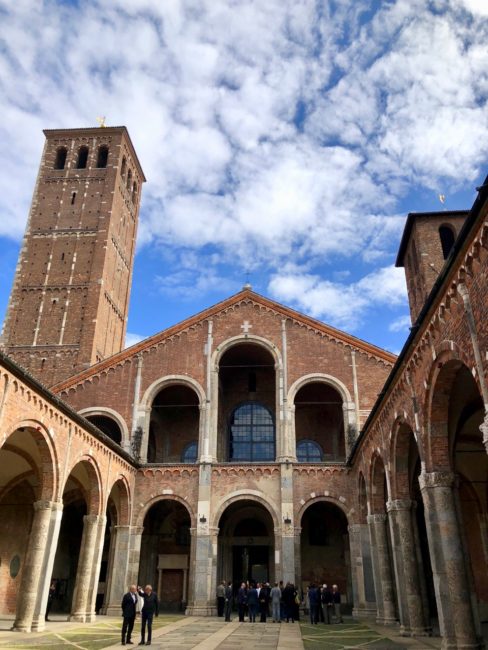







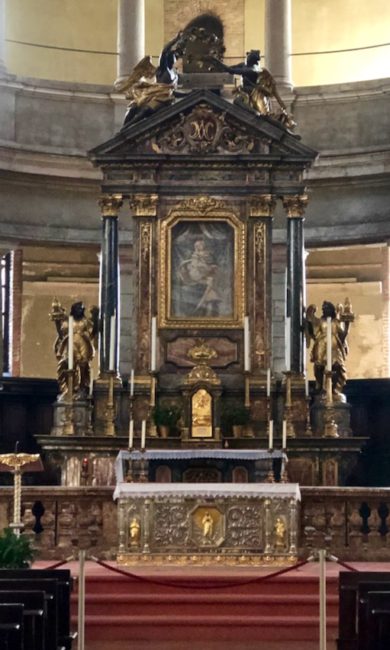




 .
. 








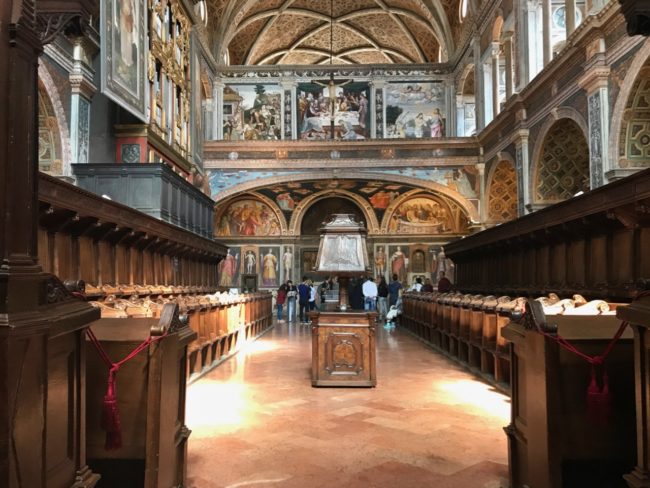 .
. 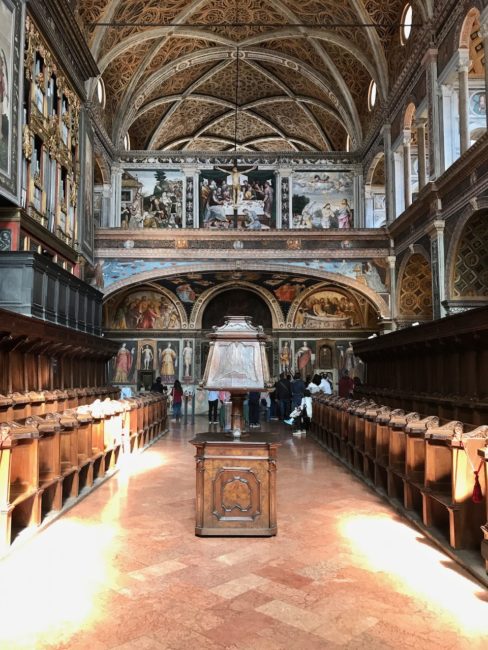



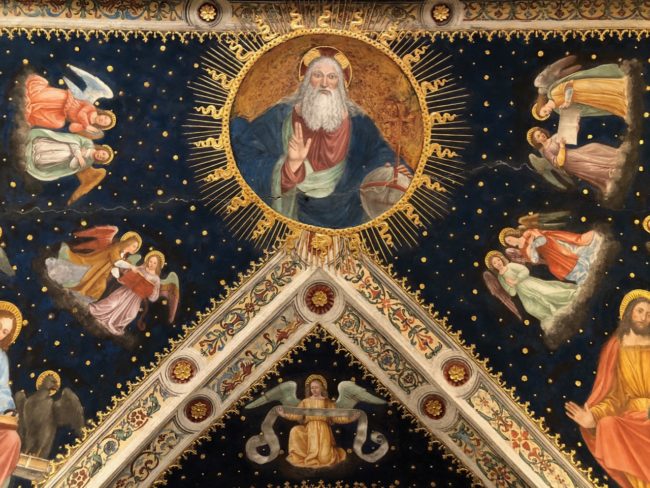




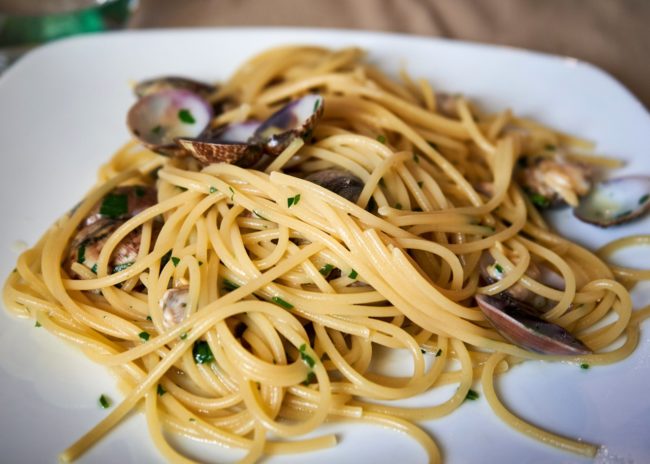

 .
. 






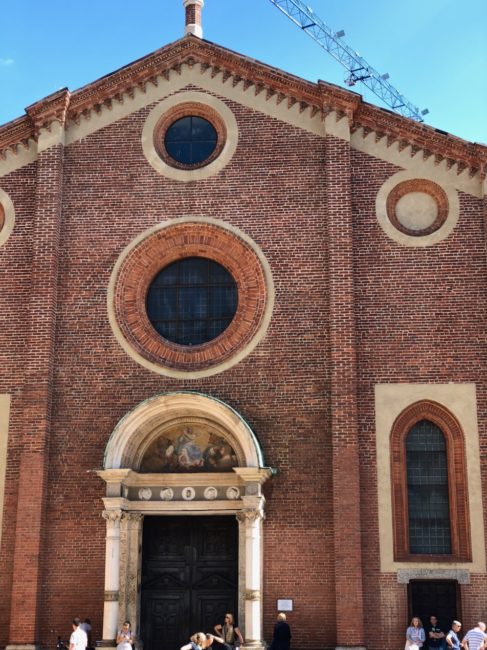



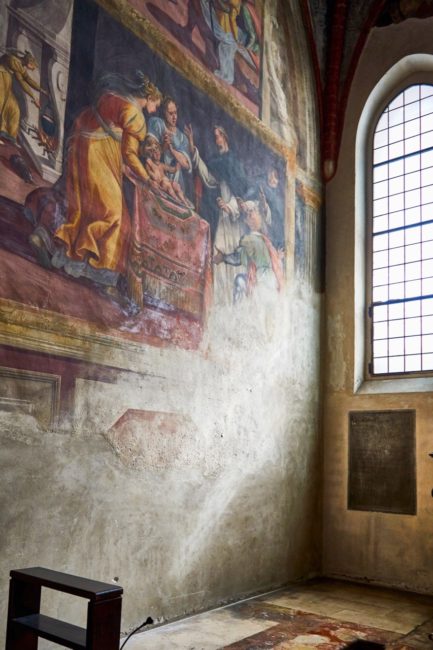 .
.






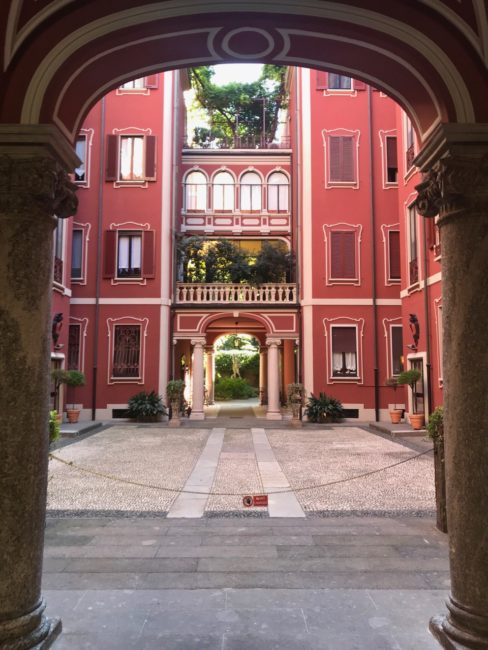

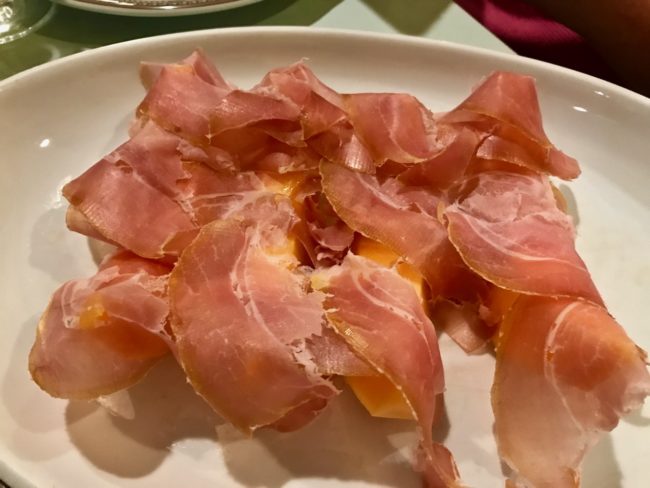
 .
. 





